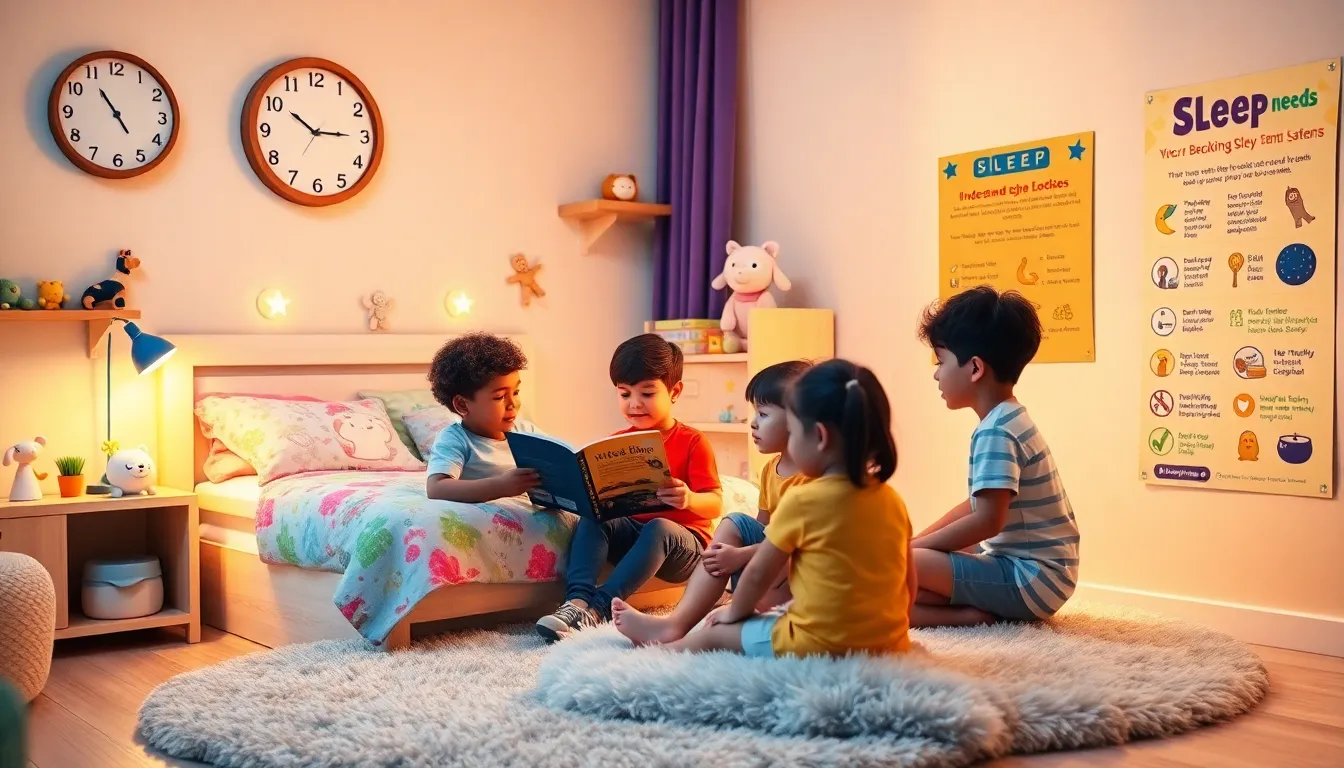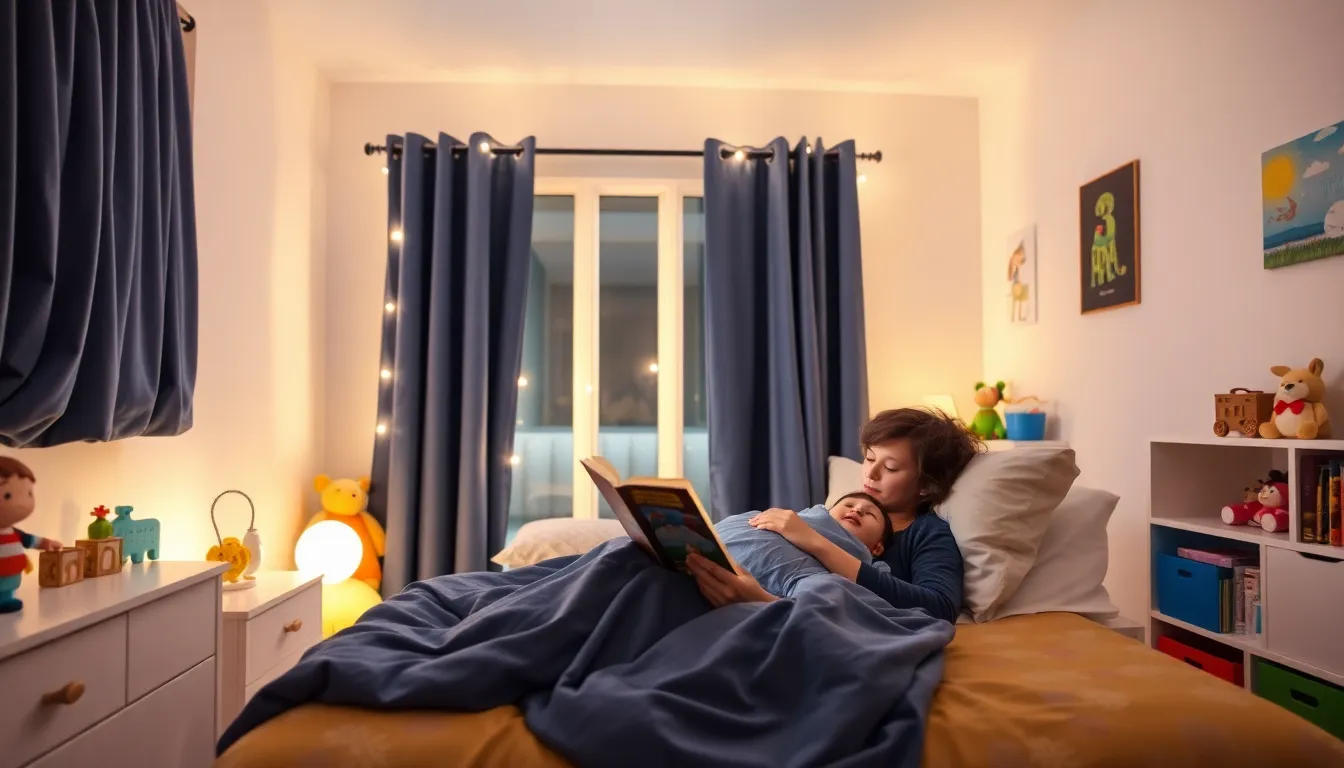Every parent knows the struggle: it’s bedtime, but little ones are bouncing off the walls like they’ve just consumed an entire bag of candy. The truth is, children need their sleep to grow, develop, and be the best versions of themselves (and to give parents a break too.). So, if you want to transform your home from a chaotic circus into a cozy sleep sanctuary, you’re in the right place. Let’s jump into practical tips that will have your kids counting sheep instead of running laps around their rooms.
Table of Contents
ToggleUnderstanding Children’s Sleep Needs

Children’s sleep requirements significantly differ from those of adults. Infants, for instance, may need up to 17 hours of sleep a day, while teenagers typically require about 8 to 10 hours. As kids grow, their sleep needs change, impacting their mood, behavior, and development. Understanding these needs is crucial when establishing healthy sleep habits.
It’s essential to be aware of the signs of sleep deprivation. If a child exhibits irritability, difficulty concentrating, or hyperactivity, these could be clear indicators that it’s time for more zzz’s. Parents should familiarize themselves with the American Academy of Pediatrics’ recommendations, which serve as a helpful guide to ensure their kids are getting enough rest.
The Importance Of A Bedtime Routine
A consistent bedtime routine can work wonders for children’s sleep patterns. Just like adults, kids thrive on predictability. Establishing a calming pre-sleep ritual helps signal to the body that it’s time to wind down.
This can include simple steps like:
- Reading a favorite story
- Taking a warm bath
- Practicing relaxation exercises or deep breathing
Engaging in these calming activities not only promotes relaxation but also strengthens the parent-child bond. When kids know what to expect, they often feel more secure, making it easier for them to settle into sleep.
Creating A Sleep-Friendly Environment
The child’s bedroom should resemble a sanctuary designed for sleep. Parents can enhance the sleep environment by adjusting a few factors:
- Light: Use blackout curtains to block out daylight. A dark room encourages the release of melatonin, the sleep hormone.
- Sound: Consider using white noise machines or fans to drown out distracting sounds.
- Temperature: Keep the room comfortably cool, ideally between 68-72°F. A cooler environment promotes restful sleep.
Personal touches like cozy blankets and soft toys can make the room inviting and comforting, further encouraging peaceful slumber.
Managing Screen Time Before Bed
In today’s digital age, managing screen time before bedtime is more important than ever. The blue light emitted from screens can disrupt sleep patterns and delay the release of melatonin.
To create a tech-free zone, parents can:
- Set a specific time in the evening when all screens must be turned off.
- Encourage alternative activities such as drawing, playing board games, or storytelling.
This not only limits exposure to screens but also provides opportunities to connect and engage with children, reinforcing those bedtime boundaries.
Healthy Lifestyle Choices That Promote Sleep
Healthy lifestyle choices play a critical role in promoting better sleep for children. Regular physical activity can positively impact sleep quality, but timing is essential. It’s best to avoid vigorous activities close to bedtime: instead, aim for fun activities earlier in the day.
Nutrition also plays a critical role. A balanced diet with the right mix of proteins, fats, and carbohydrates can influence how well children rest. Steering clear of sugary snacks and caffeine in the evenings can prevent the bedtime struggles that come from sugar highs.
Addressing Common Sleep Issues
Many children face particular sleep challenges, from nightmares to sleepwalking. Addressing these issues early is crucial. Speaking to a pediatrician or sleep specialist can help identify underlying problems.
Creating a sense of safety at night can alleviate fears. Night lights, comfort objects, or gentle reassurances can go a long way in reducing anxiety. For occasional nightmares, discussing them openly can help demystify the experience for the child, promoting understanding and acceptance.
Encouraging Positive Sleep Habits
Instilling positive sleep habits isn’t just about enforcing bedtime: it’s about nurturing a healthy attitude towards sleep. Parents should reinforce the idea that sleep is essential and even enjoyable. Positive reinforcement strategies can include:*
- Reward charts for consistent bedtime behavior.
- Encouraging kids to share stories about their dreams or bedtime experiences.*
Open communication about sleep can motivate children to take responsibility for their own bedtime success.



